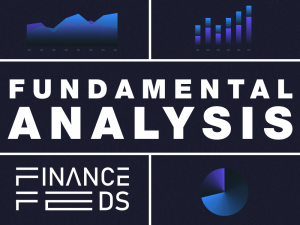Big in Japan? Yes, if you are Japanese. Tradestation shrinks in US as 60 jobs go in Plantation, Florida
As another 60 jobs go at Tradestation in Florida, we take a look at how domestic-focused the Japanese FX industry really is.

Japanese electronic trading giant MONEX Group is embarking on another exercise in shrinking its North American entity Tradestation, this time with 60 redundancies on the cards.
Japan, which is home to between 35% to 40% of all global retail FX order flow, is a completely domestic-orientated market with the largest retail FX brokerages in terms of market share based there.
Whilst only 24% of the world’s FX brokerages are in the Asia Pacific region (including Hong Kong and Singapore), 35% are in Europe but regardless of this, Japan’s large and Japan-centric brokerages regularly produce volume figures of over $1 trillion per month, far in excess of any other retail firm globally, with stalwarts such as DMM Securities holding 16.1% of all global retail FX market share.
As remarkable as this appears, it is even more remarkable that the loyalty to Japanese companies by Japanese traders is continuing to exist, which has resulted in a refocus on local markets by large firms.
In September 2014, MONEX Group subsidiary IBFX sold its US and Australian MetaTrader 4 accounts to FXCM, which was considered at the time to be a consolidation effort, however it is likely that it is more a case of Japanese firms removing focus from anywhere outside Japan.
Earlier this year, OANDA Corporation bought the remaining 2,200 clients that IBFX had still on its books that were using the proprietary Tradestation platform, which is a US market favorite, its head office in Plantation, Florida being home to some of the most astute developers in the industry.
A migration period took the Tradestation customers over to OANDA Corporation’s fxTrade proprietary platform, OANDA Corporation’s CMO Drew Izzo having explained to FinanceFeeds at the time “TradeStation Forex accountholders were accustomed to top technology and a broker that puts them first, which is precisely what they are finding as they start on the OANDA platform.”
“As part of making the transition smooth for these traders, on March 5 OANDA began offering TradeStation Forex accountholders who transfer to the OANDA platform complimentary access to the TradeStation Forex platform. They can use the TradeStation Forex platform for their research and analysis with trade orders being executed using one of OANDA’s platforms” – Drew Izzo, CMO, OANDA Corporation.
This was a masterstroke on the part of OANDA Corporation, as it acquired 2,200 loyal customers which favor a proprietary platform, however it was more a case of IBFX/Tradestation’s Japanese owners retracting from overseas territory as the expense and logistics is not worth it for the relatively small business that Japanese companies may achieve in America compared to the vast amount at home.
Unlike China, Singapore and Hong Kong, where Western companies are held in high esteem and partnerships with local introducing brokers, service providers and actual brokerages themselves are common, Japan is a place where it has thus far been impossible for firms from overseas to penetrate the vast market.
Tradable attempted to take its application-based platform into Japan, hosting application development contests in partnership with MONEX, however MONEX canned all potential proposals to move ahead with the Tradable platform in Japan, after which the entire project went completely quiet.
Following the regulation of binary options by the Financial Futures Association of Japan (FFAJ) in 2013 in which ‘ladder options’ became compulsory in which five prices must be displayed on a platform, MarketsPulse attempted to take its platform into the Japanese market, with FxTrade Financial and Planex Trade being potentially vast customers for the platform provider, neither of which really came to fruition, and since then, many of the firm’s senior executives have left the firm including CEO Rachely Esman and co-founder Shai Hamama, two of the platform industry’s most highly technologically savvy professionals, instead installing Mickey Winitsky who hails from the gaming industry, thus demonstrating that attempting to penetrate Japan’s highly advanced electronic trading sector had proved too much of an uphill struggle for a non-Japanese company.
Interestingly, five years after acquiring Tradestation, MONEX launched the Tradestation platform to a Japanese audience this year, with it having been widely accepted by traders. This shows that if a Japanese firm offers a platform that it owns, it will likely gain traction as it is considered a domestic product.
Japanese traders, unlike other traders in the APAC region, often trade manually and are not reliant on EAs (robots) which is why MetaTrader 4 is so popular in other parts of the region, yet proprietary trading platforms dominate in Japan.
A very interesting observation is that Monex Group’s divestment from non-Japanese markets has been conducted in two stages, the first being the sale of the IBFX MetaTrader 4 client bases in Australia and the US in September 2014, leaving the remaining IBFX customers in the US with the proprietary Tradestation platform, before selling that client base to OANDA last week, representing an exit from the US altogether by Monex Group.
The two periods during which Monex Group executed these transactions were periods of high global FX trading volumes, as September 2014, the month during which Monex offloaded its IBFX MetaTrader 4 client base, was a month in which $43.5 billion was traded, the highest since March that year, and substantially higher than in August 2014, during which only $29.3 billion in volume was achieved.
Subsequent to the sale of the MetaTrader 4 clients in the US and Australia, Monex Group’s global FX volumes soared to levels that were higher than any period in 2014 and that have not been repeated since. In October 2014, the company recorded $52.4 billion, followed by $55.4 billion in November and $53.9 billion in December.
As an additional and interesting side note, FinanceFeeds often is asked by professionals in this industry that have studied the Japanese market if anyone has managed to penetrate it from abroad. When it is explained by FinanceFeeds that it is a very domestic market and many attempts by even large firms have been fruitless, the response often comes back “Yes, I thought so.”









